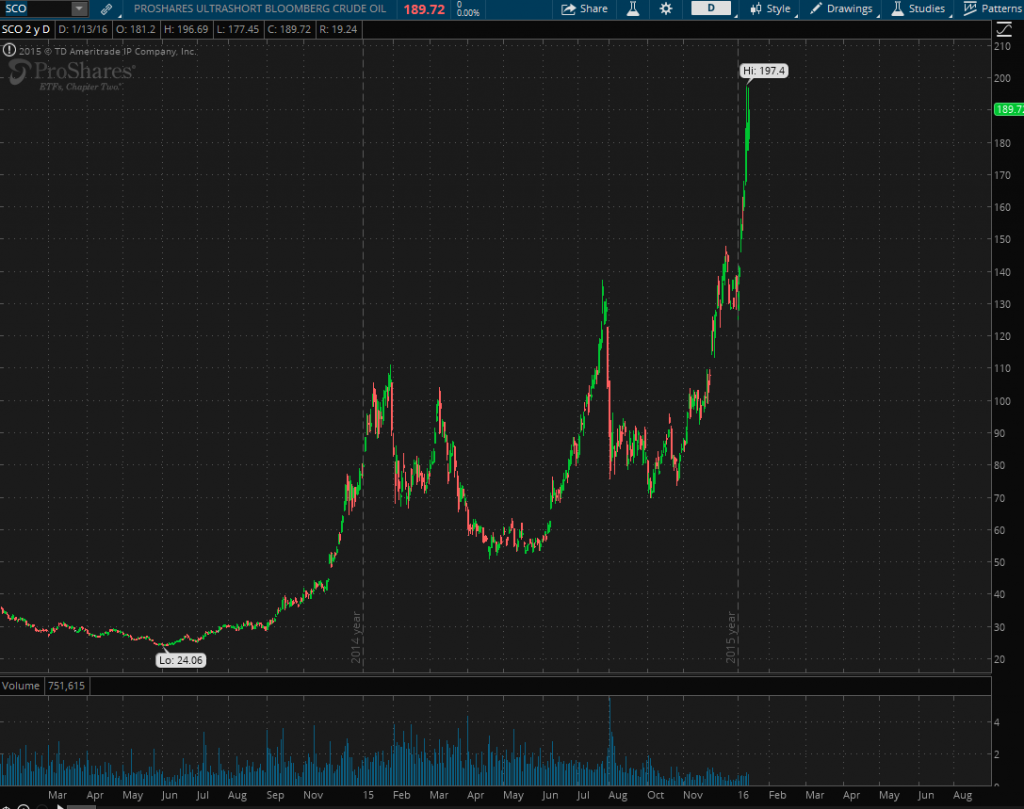I’ve been asked how to short oil quite a lot.
The by far most traded instruments are of course the oil futures traded on the NYMEX exchange, ie. the symbols “/CL” and “/QM” .
For normal net worth people the problem is that it is quite risky. If you sell one “/CL” contract it means you are selling 1,000 barrells of oil, which makes it a $31,000 sale today. If the price of oil then rises $2 you lose exactly $2,000. And these kind of moves are common …
The “/QM” contract is mini version of the CL that is covers 500 barrells of oil, which reduces your risk by the same amount. So the $2 up move will be a $1,000 loss instead.
These futures are traded five days a week 24/7.
Among the ETFs we the main and most liquid one is “USO”. But to short oil you need to short/sell this ETF and that seems not to be possible anymore, since there are no lenders (this has not always been the case).
What I have been doing though is to buy put options on USO. This is nice since the risk is limited to the price I pay. My strategy since 2011 have been to by cheap out of the money puts in different time frames and then roll them forward a week or two before expiry. They are then either worthless (if there is no move down), but have a tremendous upside if there is a move. Needless to say this strategy have worked out well with a constant low risk exposure.
Lately I have also been using another ETF – the “SCO” which is an ultrashort (inverse) ETF in oil. It has moved from $24 to $189 since oil hit $110s in the summer of 2014. Good thing about it is that risk is limited to the amount you pay for it (unlike the futures). And it is reasonably liquid with a volume of 500k – 1M shares per day. Generally though I’m a bit sceptical of these types of instruments since I dont know exactly how they are executed by ETF fund managers.
ETFs are traded normal US stock trading opening hours.
A strategy I have not used is buying put options directly on the futures, but it is also possible and one way to manage risk.
Other instruments I have not used are CFDs (Contract For Difference) which behaves like the futures but with an extra “middle man” like IG Markets. In Sweden there are also there a number of exchange traded certificates (bull and bear), which I have not used. These behaves like ETFs.
Finally, this is the two year graph on SCO. Hard to beat 600%…
The guiding principle is to manage risk. To always know what the $1 price move will get or cost me.
Of course this post is not an investment advise, only a description of what I have been doing (or chosen not to).

